Five 8-bit Micro Classics that Really Deserve a Remake
Which of your favorite classic games would you like to see remade? We've chosen five mid-80's computer games we think are perfect candidates for an update - and explain how we think it should be done.
This article first appeared on USgamer, a partner publication of VG247. Some content, such as this article, has been migrated to VG247 for posterity after USgamer's closure - but it has not been edited or further vetted by the VG247 team.
Remaking a classic, or even not-so-classic video game is a hard thing to get right. If it’s too much like the original, it seems an almost pointless exercise. Lose sight of the fundamentals that made the first game so great, and it’s less a remake, and more a new game with an old name.
So bearing that in mind, I thought I’d dig through my old 8-bit micro collection and see if I could find five very old games whose fundamental concepts are still fresh and interesting, and see whether there’s a way they could be successfully updated for today’s gamer. I’m hoping if enough people find this exercise interesting, this could become an occasional series. So if you have any ideas of your own (or suggestions) post them in the comments section and I’d love to incorporate them into a future feature.
Anyway without further ado, let’s kick off with…
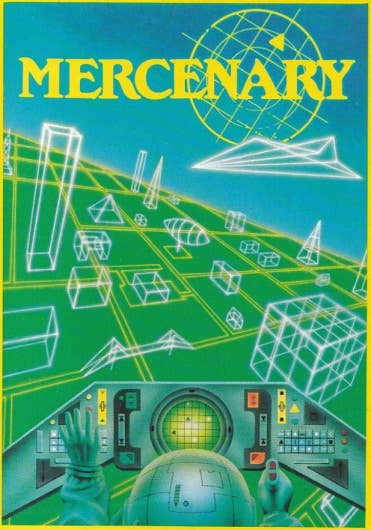
Mercenary
What it is: An exercise in design minimalism, Mercenary is an open-ended, non-linear first-person adventure game that was originally released for Atari 8-bit computers in 1985. Taking the role of the eponymous mercenary, you awaken amongst the wreckage of your space ship, which has crash-landed on an alien planet whose inhabitants are at war. And it soon becomes apparent that there’s no choice but to become involved.
What transpires is a fascinating mixture of non-linear missions, exploration and political maneuvering as you play one side against the other to achieve your goal of escaping the planet - preferably with as much cash as possible. The backdrop to all this is a barren and minimal landscape that, while sparse, contains mysterious buildings, strange landscape features and secrets to discover.
Why remake it: Is there a gap in the market for a slightly more intellectual, sci-fi adventure that doesn’t always involve looking down the barrel of a gun, or fusion pistol, or whatever laser beam of death the hero happens to be wielding? A game where adventuring and exploring – and uncovering cool, interesting things – is more the focus, underpinned by a really strong storyline with entertaining puzzles to solve and missions to complete? I’d like to think so, which is why I’m talking about this forgotten classic from Novagen Software.
What made Mercenary so great was its openness. It had a vast landscape that was both intriguing and fascinating, and you never really knew where you were, or even what kind of people/aliens you were dealing with. In a way, it’s reminiscent of a very basic Shadow of the Colossus in that despite almost no action taking place between set pieces, its environment is nevertheless incredibly atmospheric and begs to be explored.
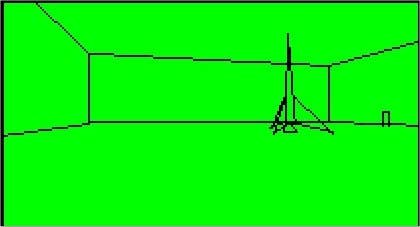
How to get it right: Beef up its story a little, add more complexity to its puzzles, and further open up its branching plotlines and you’d certainly have more than enough content for a solid, modern-day adventure. If its landscape was expanded with more mysterious buildings and features to find and explore, and perhaps locations and items to find that might reveal a little more backstory, you’d have an open game that would capture the essence of the original, but with enough oomph to make it a modern day product.
Mercenary also features a variety of different vehicles, and this is an aspect of the original game that could be expanded greatly. These could be given more interesting features, and perhaps even used more extensively to add some action to the game through combat or other kinds of missions. This would certainly add some excitement to the game, and if kept tight enough would provide a good contrast to the game’s more exploratory aspects.
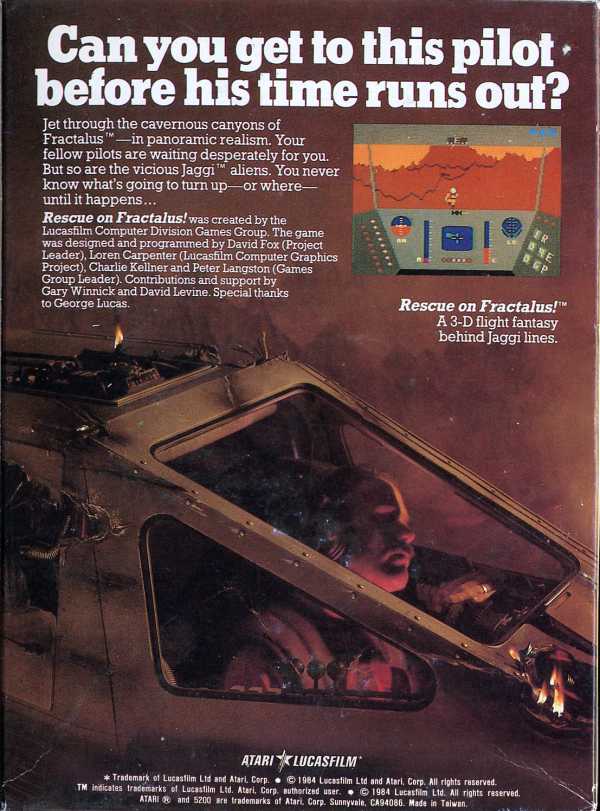
Rescue on Fractalus
What it is: Also known as Behind Jaggi Lines, this was quite probably the coolest game of 1984. Created by Lucasfilm Games (before they became LucasArts) for Atari 8-bit computers and Commodore 64, Rescue on Fractalus puts you in the seat of a search and rescue dropship on a mission to save pilots who’ve crashed on a hostile alien planet.
What made the game so notable is that it used fractal technology to render the planet’s surface, creating an environment that was like nothing else at the time. Flying over and around mountains trying to locate crash sites was truly exciting, even if it does look slow and fugly by today’s standards. However, having recently seen some very impressive modern fractal graphic demos, it’s clear that an updated version of the game could be made that would be astonishing to look at.
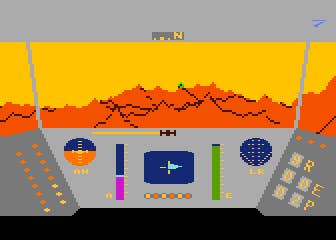
Why remake it: During the 80’s and early 90’s, Microprose built action flight sims in which you flew cutting-edge airplanes (or even helicopters) on missions whose goals included interception, target elimination, reconnaissance, bombing, search and rescue, and dealing with harsh environmental challenges. They were tremendous fun to play, but that type of game seems to have fallen out of favor these days. So I’m wondering if a remake of Rescue on Fractalus could perhaps bring back some of that old magic by keeping the original game’s premise, but dialing it up with a really cool ship (or set of ships) to fly around in?
How to get it right: Update the original game’s simple rescue missions with a whole variety of interesting and exciting things to do, and combine that with realistic-looking alien planets to fly over, and I think you might well have an appropriate homage to the original while bringing its original spirit and sensibilities bang up to date.

The Epyx Games Series
What it is: Summer Games, released in 1984, was the first of a series of highly acclaimed multi-sport games created by much admired, but now-defunct Epyx. Each release was basically a compilation of mini-games pertaining to the theme of the title. Summer Games featured eight events, including pole vault, diving, and skeet shooting, while its 1985 sequel also included eight events, such as cycling, rowing and triple jump.
The series continued to go from strength to strength over the next few years, with Winter Games, World Games and California Games all delivering the goods. After that the series seemed to run out of ideas, and following two poor Winter and Summer games, the series ran out of puff with the very disappointing California Games II.
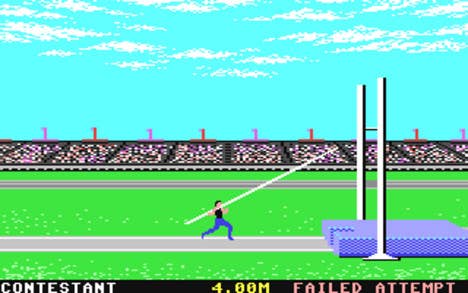
Why remake it: The best entries in the Games series all had one thing in common: they featured simple, but extremely enjoyable mini-game events that were all quick to play, challenging, competitive, highly repeatable and fun. With that in mind, something that combines the way Pac-Man Championship Edition handles challenges, highscores and competitive play with mini-games inspired by original events from the Games series could be enormously fun. Especially since some subtle additional layers of sophistication could be layered onto the original game mechanics. I think it’d be important to still keep them fast, simple and fun, but allow for far more finesse so that scores could be given even more granularity - thus dialing up the competition between players.
How to get it right: Don’t lose sight of what makes the Games series so fun: the simplicity of its format and controls. Many events were 2D, and required simple timing or resource management – and that’s what made them so quick and easy to play. First-person 3D and too much emphasis on production values would result in it losing its core appeal. Instead, focus on dialing up the competitive element and finessing the gameplay to ensure it’s something that’s easy to pick up and play, but has a high headroom for mastery.
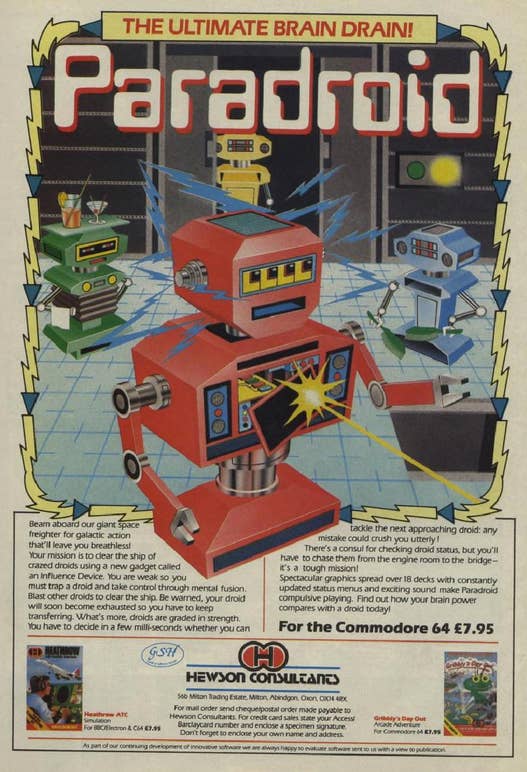
Paradroid
What it is: This 1985 Commodore 64 classic is a game I’d just love to see remade. Its premise is simple enough: take control of a robotic “001 Influence Device” and enter a giant hulk of a spaceship on a mission to destroy the army of droids residing therein. The 001 Influence Device has no weapons and no armor, but can hack other droids and take control of them for a period of time. Doing so requires winning a brilliant arcade/puzzle mini-game that involves routing power through a circuit board and overloading the target (while avoiding being overloaded itself).
Enemy droids have serial numbers (up to 999), and the higher their number, the faster, heavier, better armored and more powerfully armed they are. However, higher droids are also less stable, meaning you have less time to control them before your influence wears off. While influencing a droid, you can use its weapons and armor to destroy enemies - or use its circuitry to hack another droid.
What this premise delivers is a tense, strategic game that’s simple in concept, but complex in practice. Firstly, you’re constantly playing under an influence timer, knowing that when it runs out, you’ll revert to your default state. Which is not good when you’re deep in a multi-deck spaceship surrounded by bots that can one-shot a 001. Then there’s simply the strategy of what to control, when and where. The ship’s population is set, so if you leave two 989 droids untouched, but then you find yourself with nothing but a 333 left to control, you’ve really got your work cut out for you.
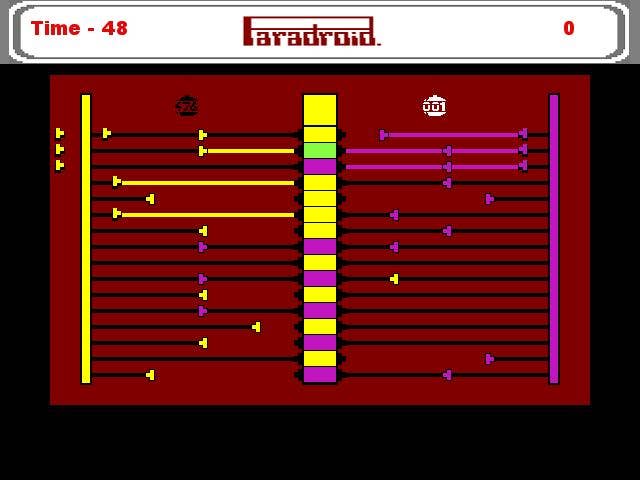
Why remake it: Strategic, tense robot combat sounds like fun to me.
How to get it right: Ultimately, I don’t think Paradroid needs much tinkering with to make it a great game today. Its fundamental design is absolutely sound. Add to that more sophisticated robots in terms of behavior/AI, more variety to the hacking element and spend time redesigning levels to really dial up the strategic element and perhaps add some more concrete mission goals, and I think this would be gold.
The big decision would be whether to keep Paradroid’s original top-down view, or go the whole hog and give it a 3D makeover. Initially I thought it would be sacrilege to mess with the original’s format, but the more I think about it, the more I think that dark, rusting hulks of ships viewed through the optics of different robots could be absolutely fantastic. Especially if robots were given additional abilities that could be of tactical use – such as heat sensors on security droids, or through-the-wall motion sensors on sentry bots.

Ballblazer
What it is: Originally released in 1984 for Atari 8-bit, Ballblazer is a futuristic one-on-one sports game – and the second game on this list from Lucasfilm Games. Players enter an arena in hovering “Rotofoils,” and battle to capture and take control of a plasma ball that’s fired onto the playfield. The ball can be shot or pushed between the opponent’s moving goalposts – or stolen by an opponent through a well-timed collision or interception of the ball in flight.
Successfully scoring a goal yields up to three points (depending on how far the Rotofoil was from it when the ball was shot), but also causes the opponent’s goal to shrink in size. The first player to score 10 points wins, but this is complicated by the fact that the scoring system only allows an aggregate of 10 points between both players – which means once 10 points are on the board, successful goals steal points from one player and are given to the other. This creates an interesting tug-of-war system that enables spectacular comebacks.
Why remake it: Featuring elements of basketball and soccer, Ballblazer is a classic one-on-one concept. It’s simple, but given a modern makeover could have much more subtle strategy and finesse than the original 8-bit version was capable of delivering.

How to get it right: The heart of Ballblazer is the weight and feel of the Rotofoils and the ball. In the original, all had certain degrees of inertia, and mastering this was key to making well-timed shots, interceptions and tackles.
Ballbazer’s original guise might be a little too simple for today’s gaming, but that’s easily remedied by adding the ability to fine-tune the parameters of a Rotofoil for different kinds of strategies. For example, adding weight to make it more effective at tackling (which would have an offset of slower acceleration).
They key issue, however, is whether or not to expand the playfield and add more players. Enabling 2v2, 3v3 or even 5v5 could be very interesting (especially when combined with adjustable Rotofoils). The original was two-player split screen only due to hardware limitations at the time (and of course the lack of connectivity back then), but the fundamental Ballblazer concept would translate to team play very well – and perhaps even make a better game.
Oh, and a remake would do the original much justice by including the same kind of algorithmically generated soundtrack featured in the 8-bit version. It used a concept called “riffology” to create a constantly changing soundtrack on the fly by using a series of musical parameters in a similar way Jazz players riff on the music they’re playing.









